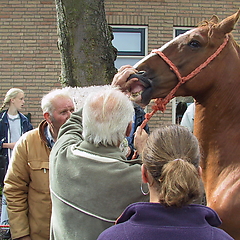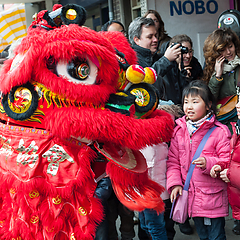De Kapsalon was founded in Rotterdam around the year 2003. A hairdresser regularly grabbed a quick bite at the local Kebab store, because of time pressure he wanted all the ingredients in a bowl so he could eat quickly. In that bowl the Mediterranean and Dutch foodcultures melted together: the doner kebab meat from Mediterranean cuisine, and the cheese, sauce and potatoes (fries) from Dutch cuisine. Colleagues of the hairdresser also regularly ordered this dish, which is how it was named Kapsalon (it means 'hair salon' in Dutch). The dish quickly spread to the other customers, after which it rolled out all over the Netherlands, in 2020 there is no Kebab shop that does not make and sell the Kapsalon.
De Kapsalon is mainly known as a nightlife snack, which is often the time when it is consumed. It is also consumed as an evening meal. It is popular from young to old, but the biggest group of consumers are mainly young people from 13 to 35 years old. This typical Dutch dish is also becoming increasingly popular in other countries. In 2018, a Nepalese chef visited the Netherlands after which he discovered the Hair Salon. When he returned, his friends asked him to make something typically Dutch, he was hesitant between the Stamppot and Kapsalon. After which he finally went for the Kapsalon and it was very popular, especially with the Nepalese elite (source).
The Kapsalon is mainly made in Doner Kebab / Shawarma shops. An aluminum container (lasagne box) is used for this. French fries are fried, meat is grilled and cut, the two come on top of each other, another layer of cheese sauce and vegetables and the Kapsalon is complete. This is the basis for every Kapsalon, here and there practitioners give their own twist to the Kapsalon. But the order always remains the same. The chefs share information about good recipes, tips & tricks. There are also innovative chefs, who create ready-made versions of the Kapsalon which you can put in the freezer / fridge from the supermarket. The Kapsalon developes further, it is available in different variants. At first it became known with shawarma on top, which is not that different from Doner Kebab. But now you also have the Ricesalon, where rice replaces the fries at the bottom.
Background of the dish
Guest workers came to Europe in the 1960s, and with them they brought their own flavors and food cultures. Kadir Nurman was the first doner kebab seller in Europe / Berlin. Doner kebab meat became very popular and it is now impossible to imagine European food culture without it. About 20/25 years ago, doner kebab meat was mainly something that the Turkish / Greek / Egyptian people knew, today it is consumed by all ethnicities. In that European food culture subcultures have emerged based on the tastes of certain countries / regions / peoples. For example, we see in Germany that the Donerkebab sellers adapted the flavors to the German taste by often using Curry sauce. The Kapsalon that was invented by Donerkebab sellers in the Netherlands is a good example too: in the Netherlands we love cheese and potatoes and even the garlic sauce is a purely Dutch product. In the Mediterranean kitchen, garlic sauce does not exist in this substance at all: we see that in 90% of the cases garlic sauce is made from mayonnaise as a basic sauce because the Dutch consumer likes mayonnaise. The vegetables in the Kapsalon also differ per area and country. In the Netherlands we use the vegetables known to us such as; Lettuce, tomato, cucumber and onions. In Germany, Donerkebab sellers also use lettuce in their dishes, but also more pickles and red cabbage.



